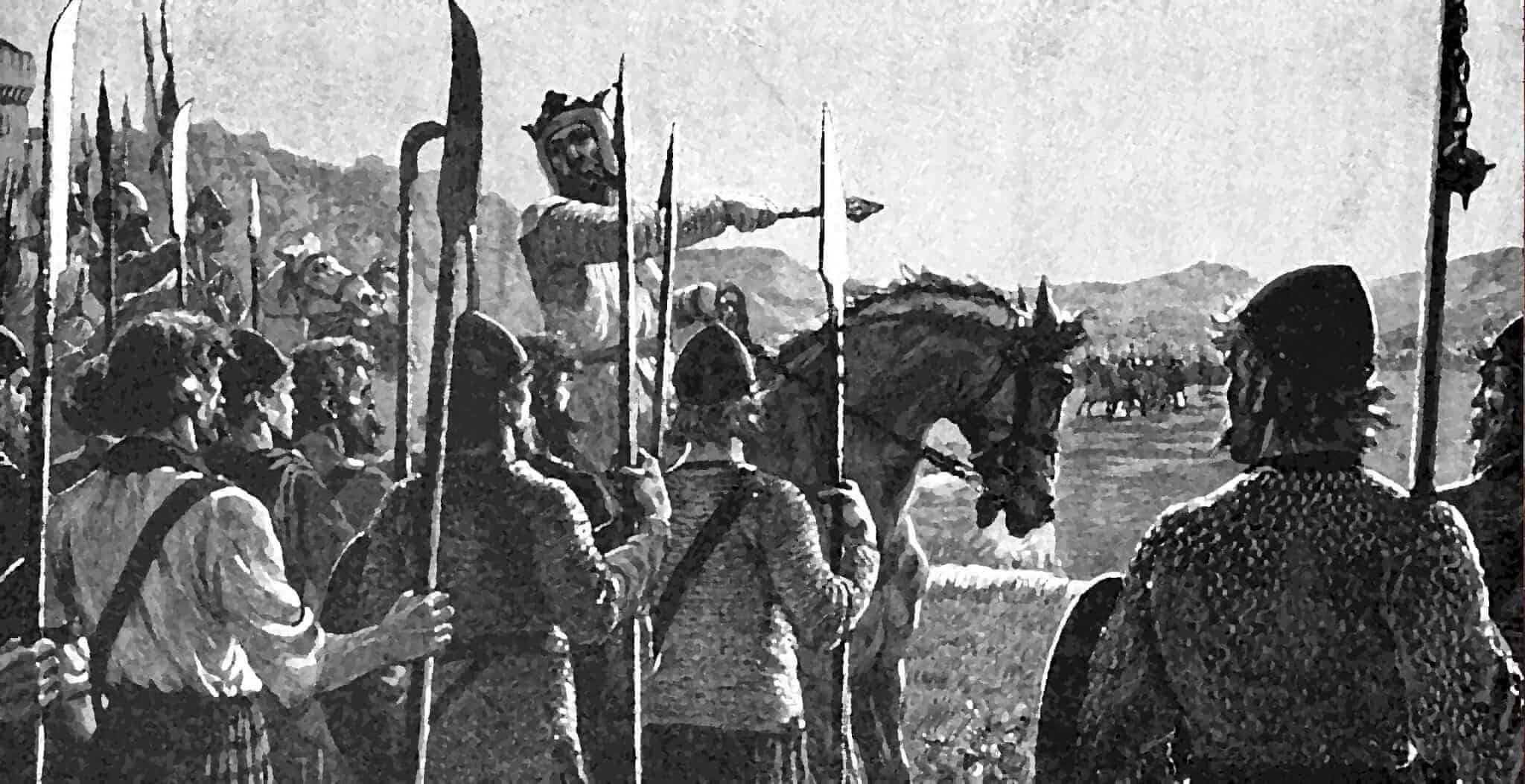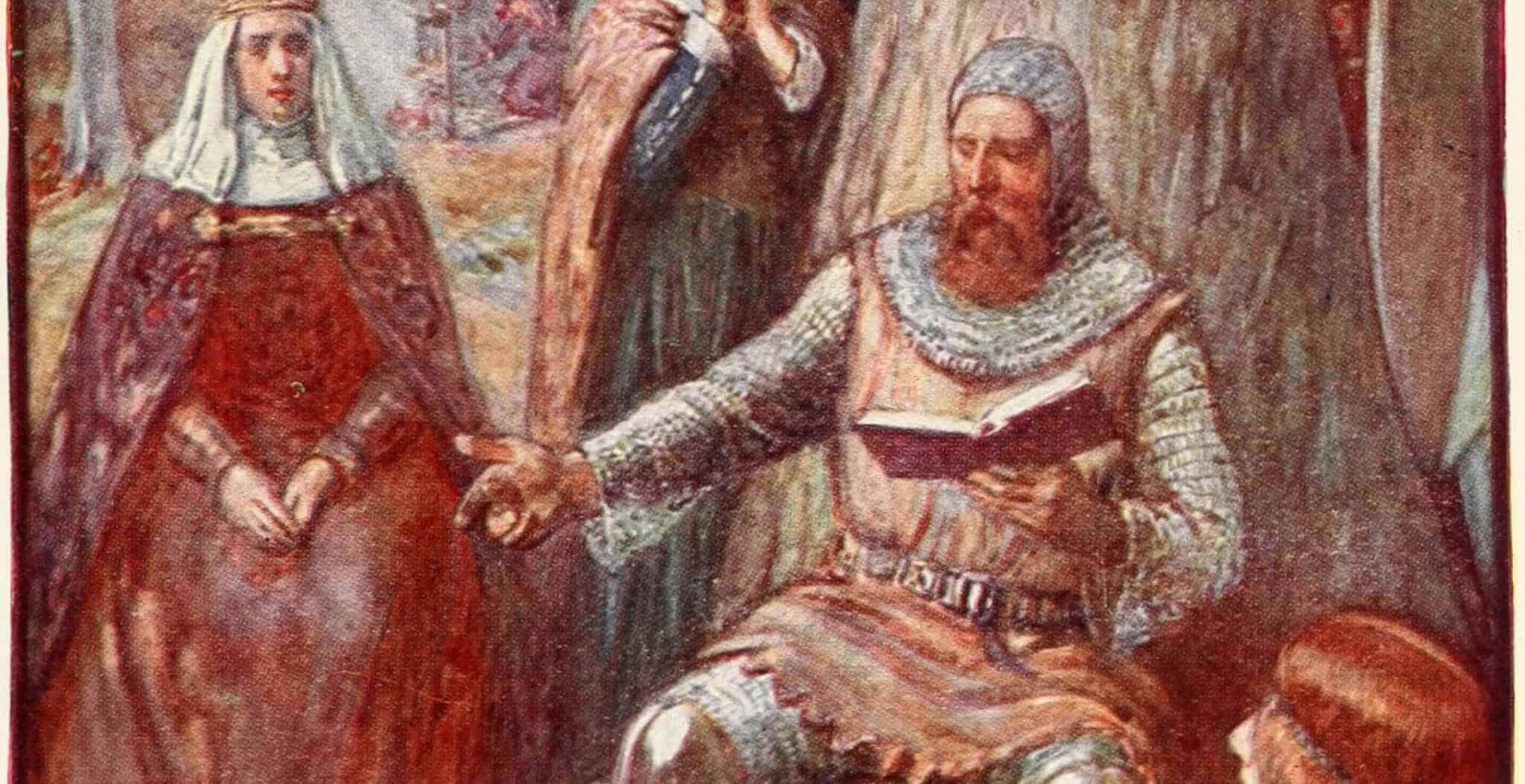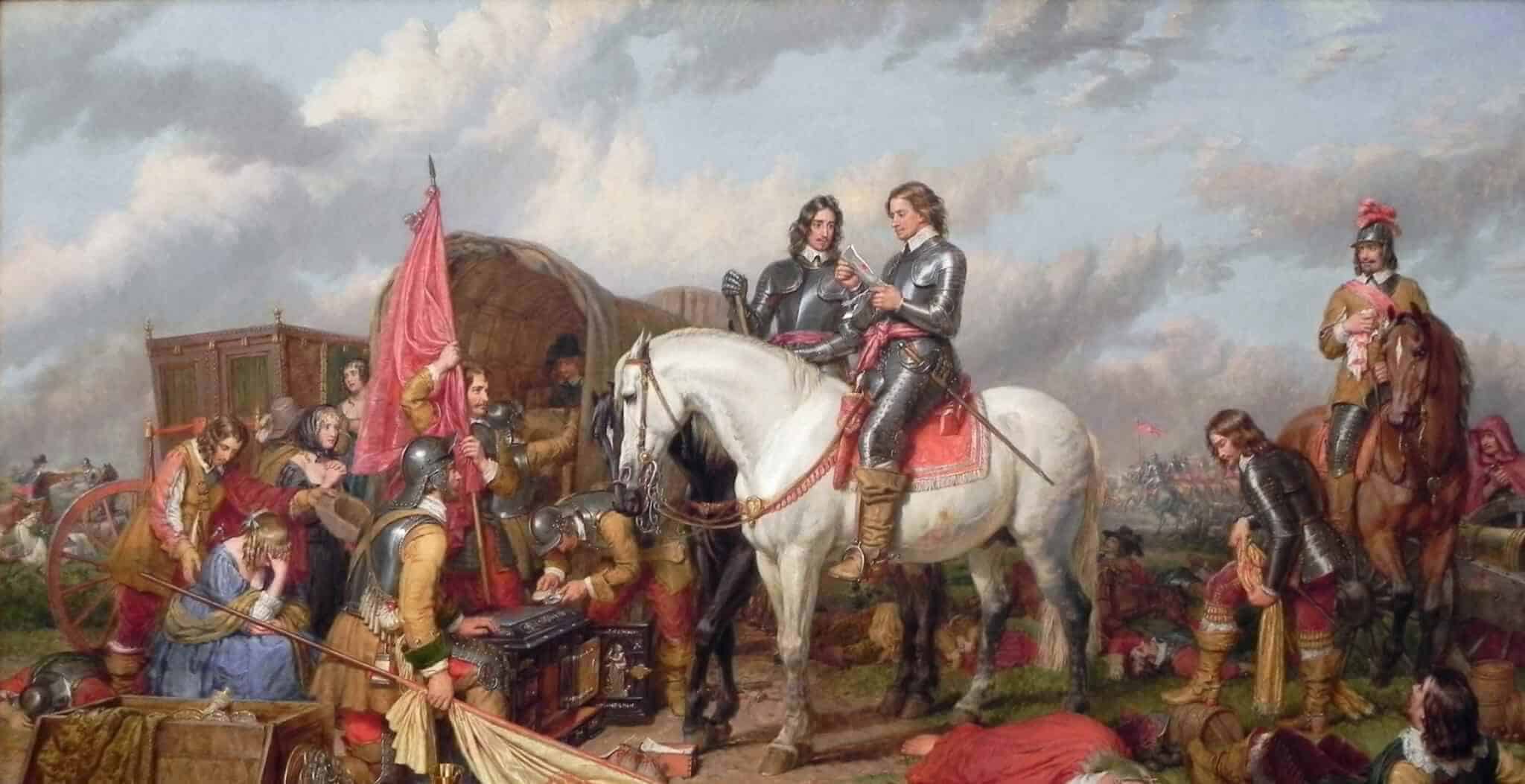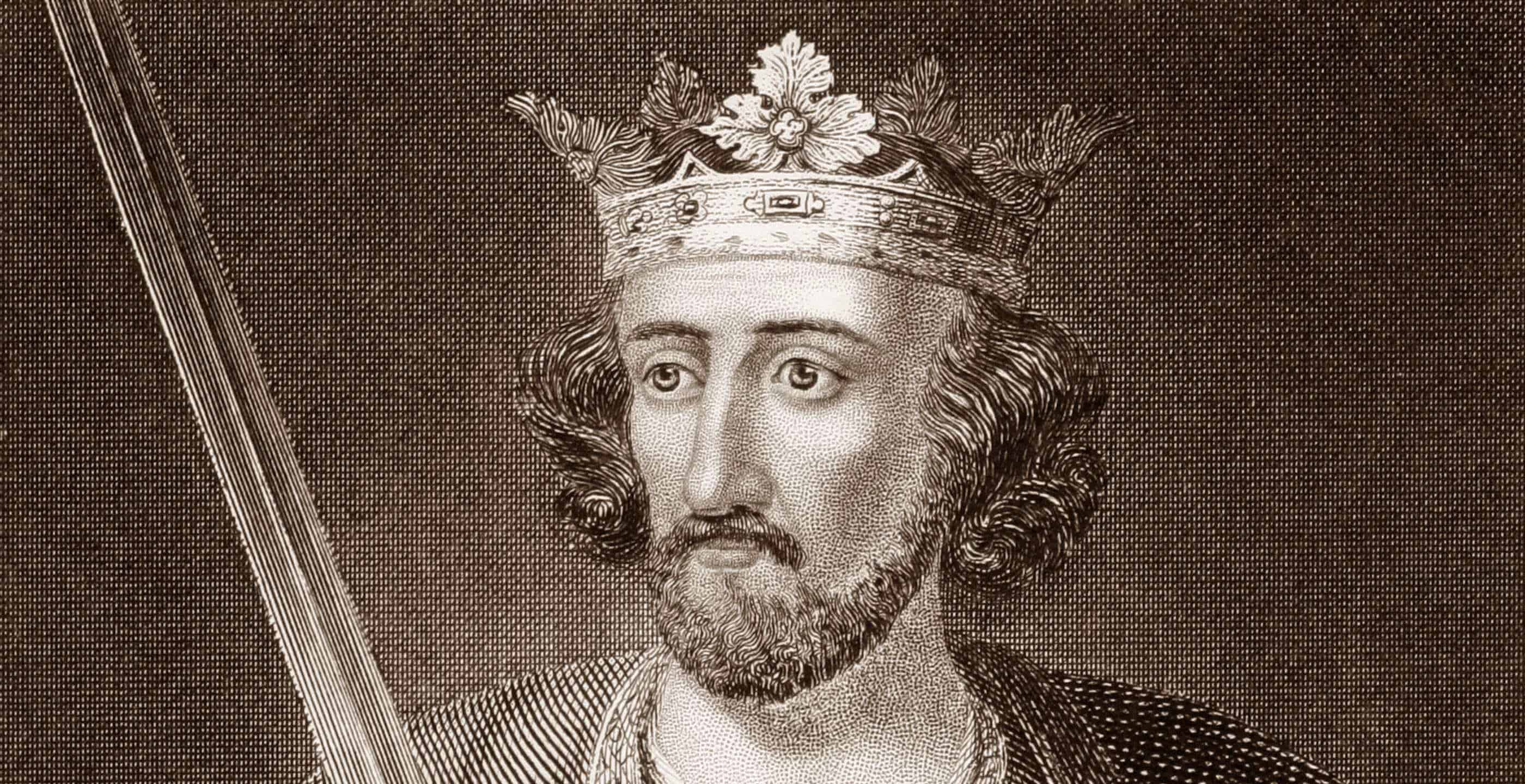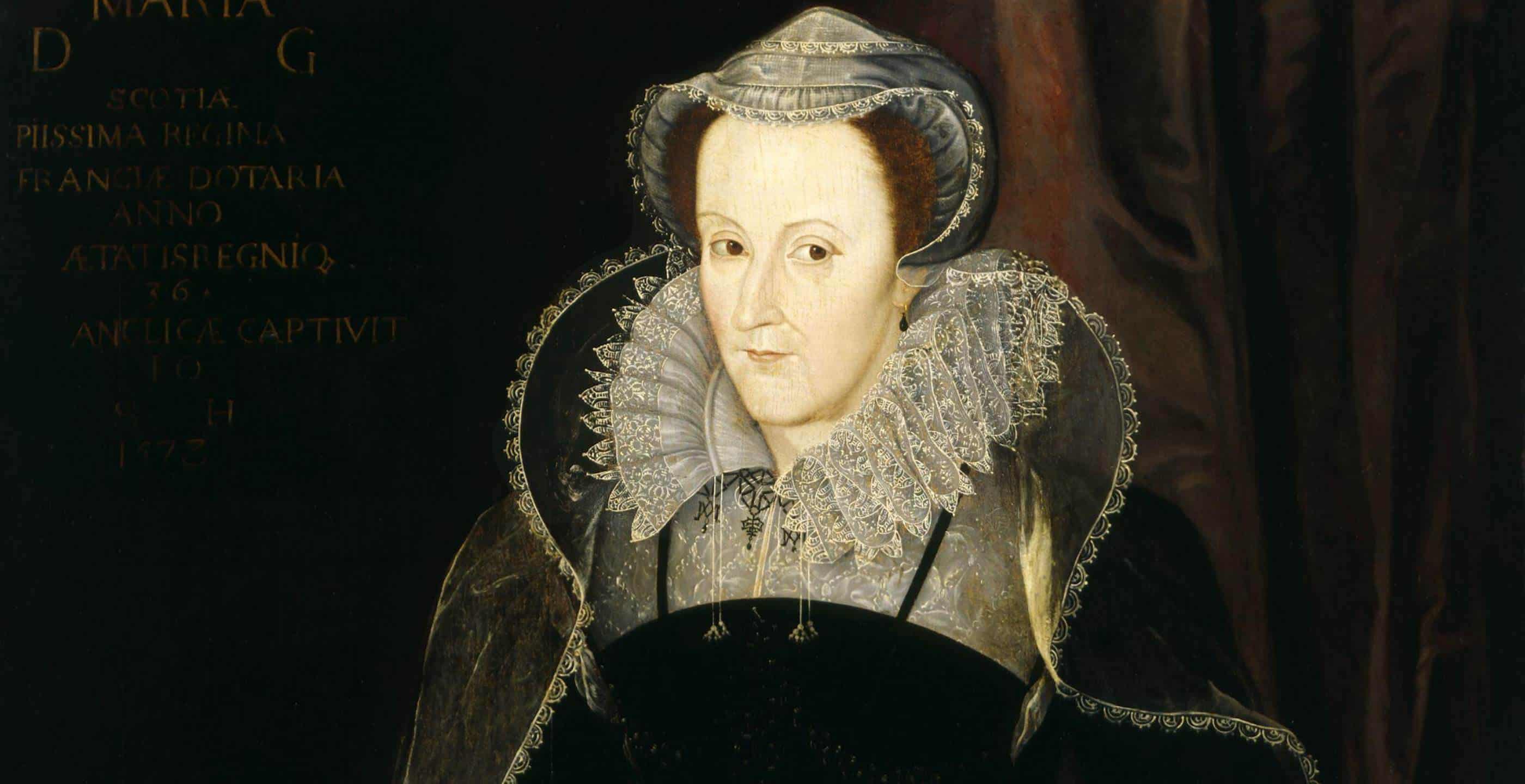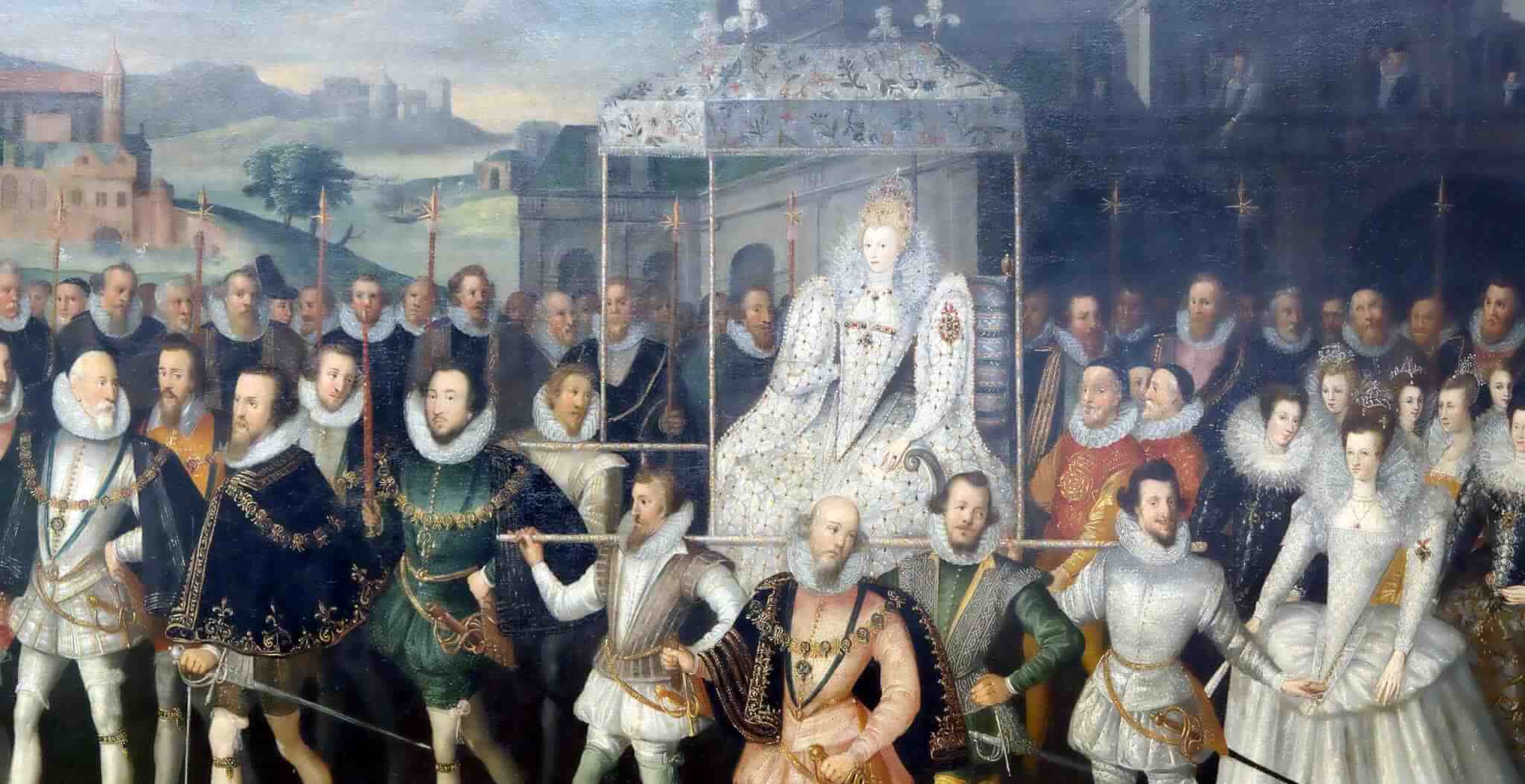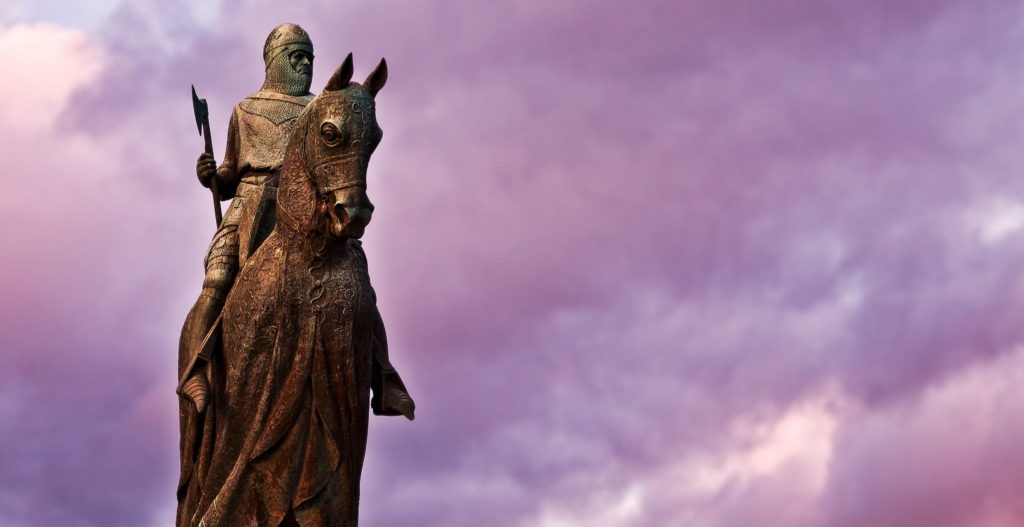Since the English King Edward I had all but destroyed the Scottish army in 1298 the Scots, now under the leadership of Robert the Bruce, had largely avoided major set piece battles. By adopting instead ‘hit and run’ guerrilla tactics, Bruce had largely succeeded in driving the English from Scotland.
By 1314 just two major fortresses remained under English control; set on the border was Berwick and controlling the crossing of the Forth was the mighty Stirling Castle. Now under siege, the garrison at Stirling had agreed to surrender to Bruce if no relief came by midsummer.
Intent on the relieving the castle, King Edward II left Berwick in May with an army estimated at 13,000 strong. Unlike his father however, Edward II was a weak and unpopular king and following years of dispute with his barons, morale in the English camp was low.
Bruce had chosen his ground carefully, deploying his troops in the woods that straddled the major road from Falkirk, close to ford that crossed the Bannock Burn (or stream) which led on to nearby Stirling. The Scottish defences included some cleverly constructed ‘surprises’ for the English cavalry.
Following Sunday Mass, the Scots took up their defensive positions. Mounted on a small horse and carrying only a battle-axe, Bruce was at the head of his troops gaining a first-hand look at the approaching English when he was apparently recognised by the English knight, Henry de Bohun. Perhaps seeing his opportunity to seize the day, de Bohun lowered his lance and charged his war-horse at Bruce. Standing his ground, Bruce waited until the last minute before twisting his mount to avoid the incoming lance, whist at the same time standing high in his stirrups to bring his axe crashing down onto the charging knight’s helmeted head, killing him instantly.
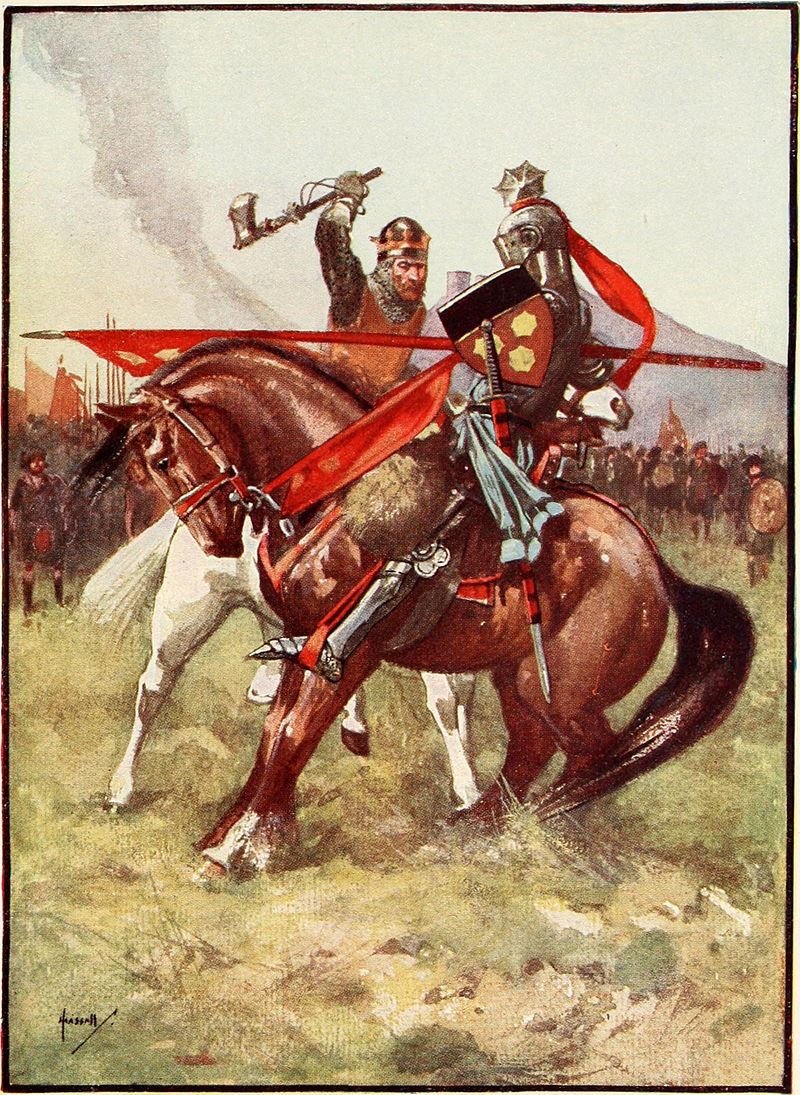
Early the following morning Edward made the fatal decision to cross the river and was surprised to see the Scottish army move from the cover of the woods to meet them. The massive English army trundled slowly into position as the entire Scottish force descended upon their disorganised ranks. Edwards’s army were too tightly packed to offer any meaningful defence and slowly the English formations began to crumble.
Recognising the inevitable, Edward fled the field along with his bodyguard, and as the panic spread through the English ranks defeat turned into a rout.
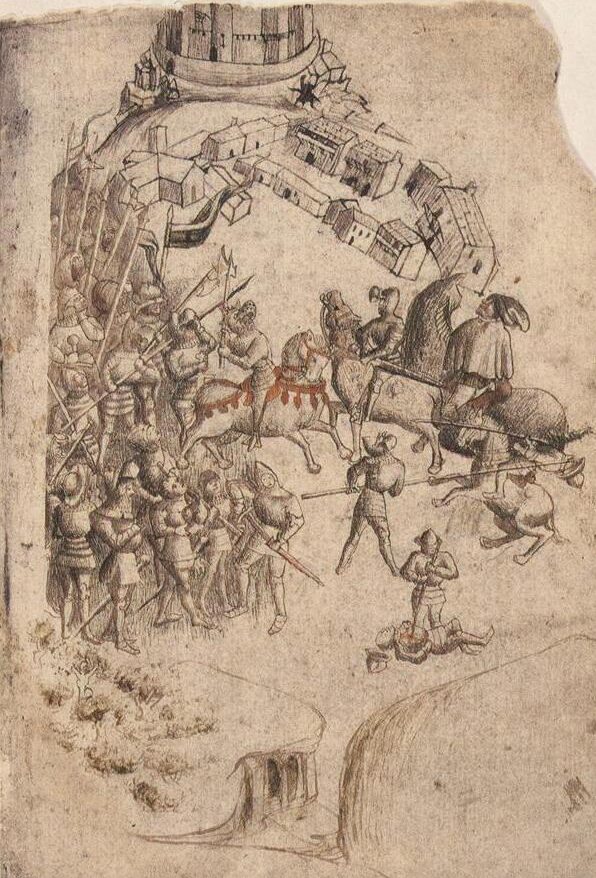
With a river to cross and 90 miles to the border, and with the entire Scottish army in hot pursuit, it is estimated that only around 3,000 footsoldiers made it back to England. Although it would be several more years before the English finally recognised full Scottish independence, this significant Scottish victory greatly strengthened Robert Bruce’s position as king.
Click here for a Battlefield Map
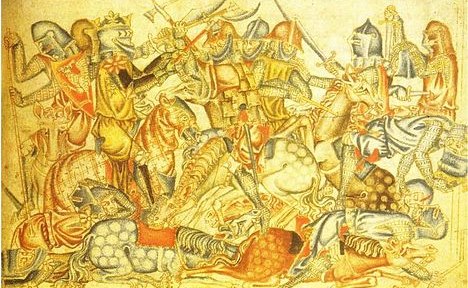
Key Facts:
Date: 23rd and 24th June, 1314
War: First War of Scottish Independence
Location: Bannockburn, near Stirling
Belligerents: Kingdom of Scotland, Kingdom of England
Victors: Kingdom of Scotland
Numbers: Scotland around 6,000, England around 13,000
Casualties: Scotland 500 – 4,000, England around 10,000
Commanders: Robert the Bruce (Scotland), King Edward II (England)
